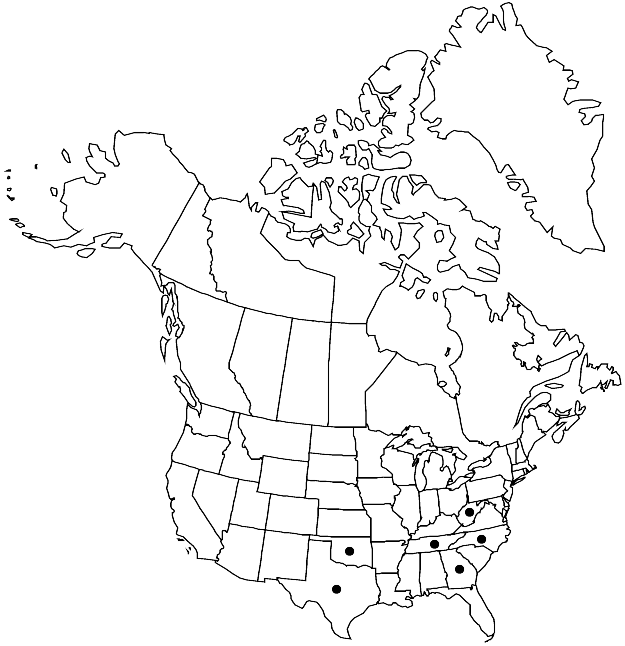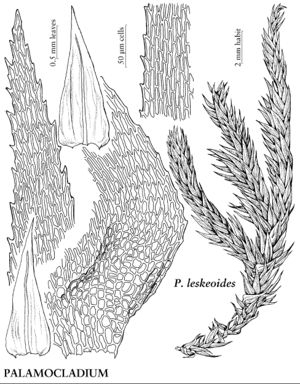Difference between revisions of "Palamocladium leskeoides"
Bull. Torrey Bot. Club 40: 673. 1914.
FNA>Volume Importer |
imported>Volume Importer |
||
| Line 54: | Line 54: | ||
|publication year=1914 | |publication year=1914 | ||
|special status=Illustrated | |special status=Illustrated | ||
| − | |source xml=https:// | + | |source xml=https://bibilujan@bitbucket.org/aafc-mbb/fna-data-curation.git/src/bb6b7e3a7de7d3b7888a1ad48c7fd8f5c722d8d6/coarse_grained_fna_xml/V28/V28_703.xml |
|genus=Palamocladium | |genus=Palamocladium | ||
|species=Palamocladium leskeoides | |species=Palamocladium leskeoides | ||
Revision as of 22:48, 27 May 2020
Plants rigid, somewhat glossy. Stems 3–7 cm, branches to 10 mm, spreading. Stem leaves 2.3–3 × 0.8–1 mm; base abruptly rounded to insertion; marginal teeth partly recurved; costa 90–100% leaf length; alar cells 6–10 × 7–11 µm, region opaque, ± clearly delimited, extending almost to margins; laminal cells 35–65 × 5 µm, walls moderately porose; basal juxtacostal cells 9–11 µm wide, more distal juxtacostal cells elongate, in 2–4 rows, walls strongly pitted; cells in acumen rhombic. Sporophytes unknown in North America.
Habitat: Limestone cliffs, boulders
Elevation: low to moderate elevations (0-900 m)
Distribution

Ga., N.C., Okla., Tenn., Tex., W.Va., Mexico, Central America, South America.
Discussion
H. Hofmann (1997b) considered Palamocladium leskeoides to have a pantropical distribution, but specimens of Palamocladium from Asia and Africa differ somewhat from the American ones.
Selected References
None.
